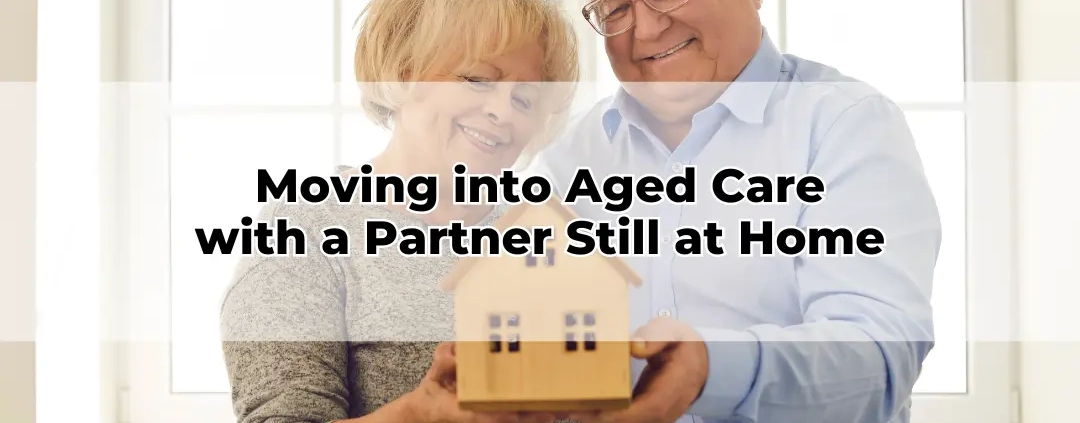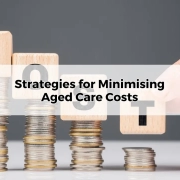Moving into Aged Care with a Partner Still at Home
Table of Contents
ToggleThe transition into aged care is a significant life event, not only emotionally but financially-particularly when one partner enters care while the other remains in the family home. This dual household scenario creates a unique set of financial intricacies that require informed guidance. The regulatory framework surrounding aged care fees, means testing, home ownership, and Centrelink entitlements becomes increasingly complex in these circumstances. Without a clear understanding, couples may unknowingly erode their financial security or miss out on legitimate entitlements.
Assessing the Aged Care Means Test
The means test is a cornerstone of aged care fee assessments in Australia. When one partner moves into residential aged care, the means test evaluates income and assets to determine applicable fees. The Services Australia conducts this assessment, which can substantially influence the daily means-tested care fee. In couple situations, both combined and individual assets are examined, but the family home may be treated differently depending on occupancy. Knowing how assets are split and what exemptions apply is essential in avoiding higher costs than necessary. Strategic financial advice can ensure that available concessions are fully leveraged.
The Family Home: Asset or Exempt?
For couples where one partner remains in the home, the principal residence is typically exempt from the aged care asset test for as long as the partner continues to live there. This exemption can significantly lower the means-tested care fee for the individual entering care. However, misunderstanding this exemption-or triggering events that alter the exemption status-can have costly ramifications. For example, renting out the home or transferring ownership may inadvertently reclassify the property as an assessable asset. Detailed consideration of living arrangements and ownership structures is vital to protect financial interests.
Navigating the Basic Daily Fee and Means-Tested Care Fee
Every aged care resident must pay the basic daily fee, which is 85% of the single Age Pension. On top of this, a means-tested care fee may be charged depending on financial capacity. This fee is where planning becomes crucial. For partnered individuals, the fee calculation considers half of the couple’s combined assets and income. Misreporting or failing to plan asset distributions can result in inflated fees. Financial specialists can assist in modelling fee projections under different scenarios, ensuring affordability is maintained over the long term.
Implications for the Age Pension and Income Support
Moving into aged care does not automatically revoke Age Pension entitlements, but it can influence them. Centrelink reassesses eligibility and payment levels based on new living arrangements and income splits. If a couple is deemed separated by illness-meaning one resides in care and the other at home-they may each be assessed as singles. This shift can sometimes lead to higher individual payments but can also increase exposure to asset and income thresholds. It’s crucial to monitor how these changes impact both cash flow and overall retirement planning.
Preserving Cash Flow for the Partner at Home
The partner remaining at home must continue to cover ongoing living expenses, including rates, utilities, insurance, food, transport, and personal needs. In many cases, household income may drop if Age Pension entitlements are reduced or if superannuation income is diverted toward aged care fees. Protecting the financial wellbeing of the spouse at home is a primary goal of aged care planning. This may involve creating a sustainable income strategy, adjusting investment portfolios, or rearranging assets to ensure the at-home partner is not left financially vulnerable.
The Role of Refundable Accommodation Deposits (RADs)
Accommodation payments in residential care are often structured as Refundable Accommodation Deposits (RADs). These can range significantly, sometimes exceeding $500,000, and must be funded via liquid assets, sale of property, or structured drawdowns. For couples, paying a RAD from joint assets can affect the financial position of the at-home partner. It’s possible to negotiate partial RADs or combine with Daily Accommodation Payments (DAPs) to preserve liquidity. Strategic decisions around RADs should consider their impact on estate planning, income streams, and capital accessibility for the partner remaining in the home.
Minimising Aged Care Fees Through Gifting and Structuring
Gifting assets to family members to reduce assessable wealth is a strategy that must be approached with extreme caution. Centrelink applies strict gifting rules, allowing only limited amounts before deeming excess amounts as assessable for up to five years. Missteps can lead to higher aged care costs and reduced government support. In some cases, establishing life interest arrangements or adjusting superannuation income streams may prove more advantageous. Aged care financial specialists can offer advanced structuring options that align with legislative constraints while achieving financial efficiency.
Legal and Estate Planning Considerations
The move into aged care should prompt a review of legal and estate arrangements. Powers of attorney, enduring guardianship, and advance care directives should be updated. For couples, ensuring both parties’ legal affairs are current is vital-especially if cognitive decline or medical dependency becomes a factor. Estate planning must also consider the implications of RADs, ongoing care fees, and the future use or transfer of the family home. Clear documentation and strategic planning can prevent disputes and ensure that the at-home partner is fully protected.
Taxation Issues and Opportunities
There are potential taxation implications when funding aged care. Selling assets to cover RADs or daily fees can trigger capital gains tax (CGT), particularly for investment properties or shares. In contrast, the family home is generally CGT-exempt if sold while a partner continues to reside there. Pension income, investment earnings, and drawdowns from superannuation may also have tax impacts. Optimising tax positioning through asset timing, structuring, and concessions can improve net income and reduce aged care outflows.
Planning for Future Care Transitions
In many cases, the partner remaining at home may eventually require care themselves. Planning for this potential scenario is essential to avoid a second financial upheaval. If all assets are exhausted for the first partner’s care, the second may face limited options. Preserving wealth, maintaining flexibility in asset use, and staggering aged care funding strategies can help both partners transition more comfortably. A long-term view is essential to maintaining control and dignity over future choices.
Why Specialist Advice Matters
The intersection of aged care policy, taxation, superannuation, and Centrelink regulation is exceptionally complex when one partner enters care. Missteps can be financially devastating. Aged care financial specialists offer the knowledge to navigate these interdependencies. Their advice ensures that entitlements are maximised, costs are minimised, and both partners’ interests are safeguarded. Rather than reacting to immediate needs, advisers create strategic frameworks that support long-term outcomes for both individuals in the couple.
Conclusion
Navigating aged care with a partner still at home involves much more than managing fees-it’s about protecting the financial integrity of two lives intertwined. Without thorough planning, one partner’s care needs can unintentionally compromise the wellbeing of the other. Thoughtful, informed financial advice delivers peace of mind and practical security. Couples facing this transition deserve to move forward with confidence, knowing their interests are respected and their resources optimised.









